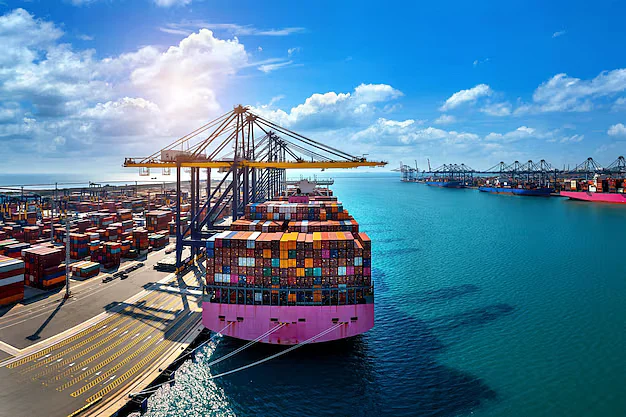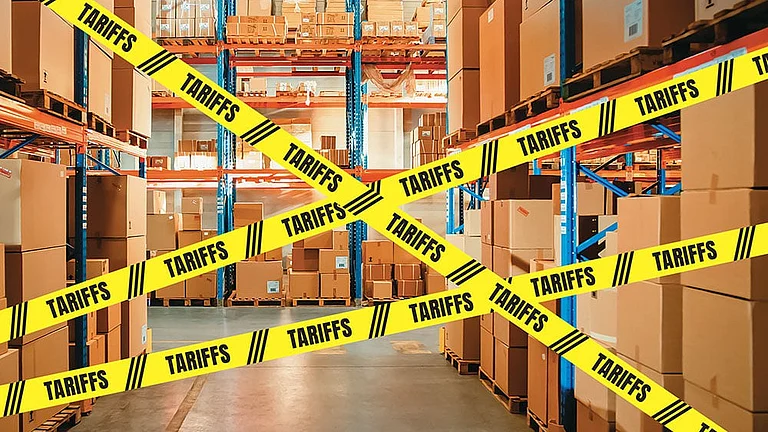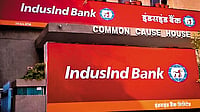
The US, under President Trump, has imposed an additional 25% tariff on Indian goods, raising the total duties to 50%.
High-impact sectors include textiles, apparel, gems & jewellery, shrimp, leather, footwear, and chemicals.
Indian exporters anticipate 40–50% decline in US-bound exports, with orders being put on hold, margins squeezed, and fears of losing long-time clients.
Export bodies like CITI and exporters urge the government to fast-track the India–US trade deal, though India remains firm on not conceding to demands involving agriculture and GM products.
Domestic export sectors such as leather, chemicals, footwear, gems and jewellery, textiles and shrimp will be severely impacted by the imposition of the 50% tariff by the US, say industry experts.
US President Donald Trump on Wednesday slapped an additional 25% tariff, raising the total duties to 50% on goods coming from India, as a penalty for New Delhi's continued purchase of Russian oil.
The United States has imposed additional tariffs or penalty for Russian imports only on India while other buyers such as China and Turkey, have so far escaped such measures.
"The tariffs are expected to make Indian goods far costlier in the US, with potential to cut US-bound exports by 40–50%," think tank GTRI said.
After the new tariff, it said, organic chemicals' exports to the US will attract additional 54% duty. The other sectors which will attract high duties include carpets (52.9%), apparel - knitted (63.9%), apparel - woven (60.3%), textiles, made ups (59%), diamonds, gold and products (52.1%), machinery and mechanical appliances (51.3%), furniture, bedding, mattresses (52.3%).
The 25% duty, announced on July 31, will come into force from August 7 (9.30 am IST).
The additional 25% will be implemented by the US from August 27. These will be over and above the existing standard import duty in the US.
In 2024-25, the bilateral trade between India and the US stood at USD 131.8 billion (USD 86.5 billion exports and USD 45.3 billion imports).
The sectors, which would bear the brunt of 50% duty include textiles/ clothing (10.3 billion), gems and jewellery (12 billion), shrimp (USD 2.24 billion), leather and footwear (USD 1.18 billion), chemicals (2.34 billion), and electrical and mechanical machinery (about USD 9 billion).
Kolkata-based seafood exporter and MD of Megaa Moda Yogesh Gupta said that now India's shrimp will become expensive in the US market.
"We are already facing huge competition from Ecuador as it has only 15% tariff. Indian shrimp already attracts a 2.49% anti-dumping duty and a 5.77 per cent countervailing duty. After this 25%, the duty will be 33.26% from August 7," Gupta said.
The Confederation of Indian Textile Industry (CITI) said that it is "deeply concerned" about the potential adverse impact of the effective 50% US tariff rate for India.
The US is India's largest market for textile and apparel exports..
"The US tariff announcement of August 6 is a huge setback for India's textile and apparel exporters as it has further complicated the challenging situation we were already grappling with and will significantly weaken our ability to compete effectively vis-à-vis many other countries for a larger share of the US market," it said.
It urged the government to urgently take steps to help the sector during these hugely testing times.
Colin Shah, MD, Kama Jewelry, said this move is a severe setback for Indian exports, with nearly 55% of India's shipments to the US market directly affected.
The 50% reciprocal tariff effectively imposes a cost burden, placing our exporters at a 30–35% competitive disadvantage compared to peers from countries with lesser reciprocal tariff, he said.
"Many export orders have already been put on hold as buyers reassess sourcing decisions in light of higher landed costs. For a large number of MSME-led sectors, absorbing this sudden cost escalation is simply not viable. Margins are already thin, and this additional blow could force exporters to lose long-standing clients," Shah said.
Kanpur-based Growmore International Ltd MD Yadvendra Singh Sachan said the exporters should look for new markets to maintain export growth.
Exporters are hoping that early finalisation of the India-US bilateral trade agreement will help in dealing with the tariff challenges.
The negotiations between India and the US are still going on for an interim trade deal, though there will be no compromise on the red lines with regard to duty concessions on agriculture items, dairy, and genetically modified (GM) products, sources said.
The two countries are negotiating a bilateral trade agreement (BTA). They are aiming to conclude the first phase of the pact by fall (October-November) this year.































